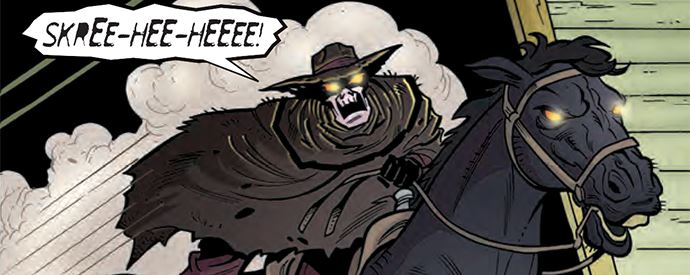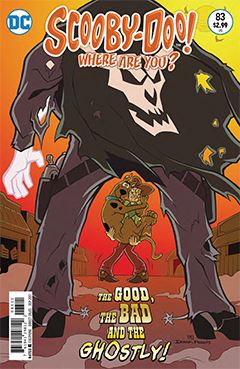- Comics
- Comics Reviews
- Manga
- Comics Reviews
- European Comics
- News
- Comics News
- Press Releases
- Columns
- Spotlight
- Digital Comics
- Webcomics
- Cult Favorite
- Back Issues
- Webcomics
- Movies
- Toys
- Store
- More
- About

By Philip Schweier
July 12, 2017 - 04:47
One
thing I like about the Scooby-Doo comic book is they (usually) contain two
stories. It reminds me of the good old days when comics contained multiple
stories, offering readers more bang for their buck. For a kid with very little
pocket money, that was important.

In the latest issue, the opening story is set on a dude ranch, with a ghostly cowboy riding about, chasing away customers and cattle. Of course, the Mystery Inc. kids piece together the clues to figure out who the real culprit is, with pkenty of shananigans in the local saloon from Shaggy and Scoob. By the way, I love the Western variations on their usual wardrobe.
Story #2 is set against the backdrop of a New England seaside town, in which a horror has come to their beaches. No, not a shark. It’s a demon, seemingly awakened by the flash and thunder of the annual fireworks display. This time, the solution is a bit more transparent, but the story is timely, and John Rozum made the effort to elevate the story as much as a he could.
Though that may sound like I’m damning with faint praise, the fact of the matter is comic book writers these days struggle with a smaller format (8-10 pages). As someone with no small experience in printing/publishing, to me the hallmark of a good writer is being able to write within the confines of the established format. Too many comic book writers these days feel the need for mood and atmosphere, which is all well and good, but shouldn’t that be left in the hands of the artist? There just isn’t room for several panels of silence, and I would rely on a writer to provide adequate art direction to a comic artist so that it become unnecessary.
Maybe
with an all-ages book like Scooby Doo, I’m setting the bar a little high. But
it is on such titles that artists and writers make their bones. Kudos to the
artist who recognizes the opportunity to learn.